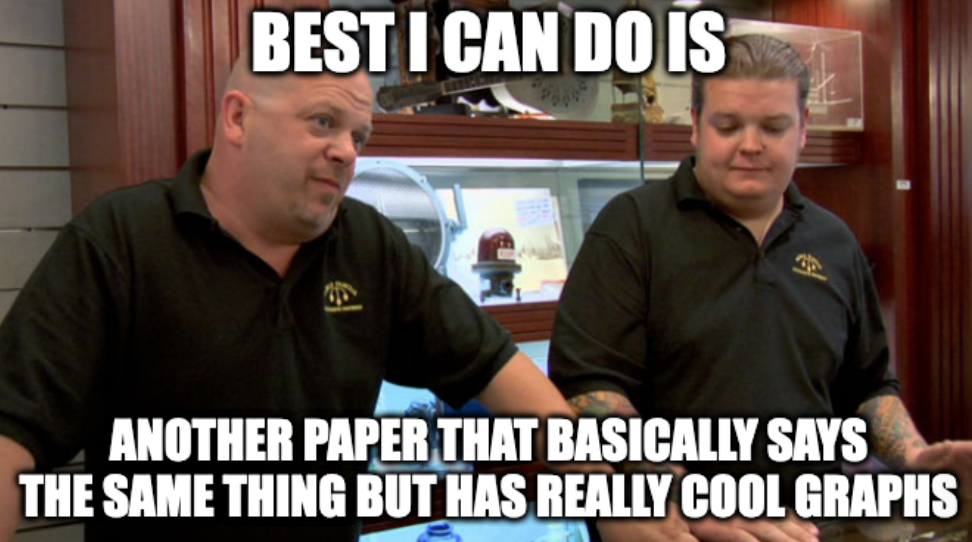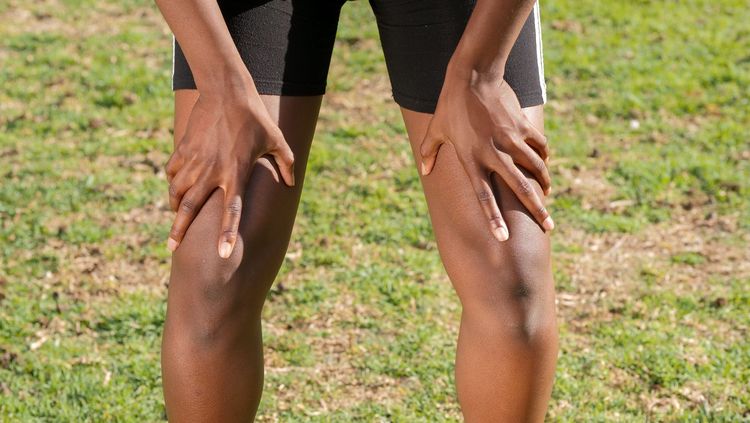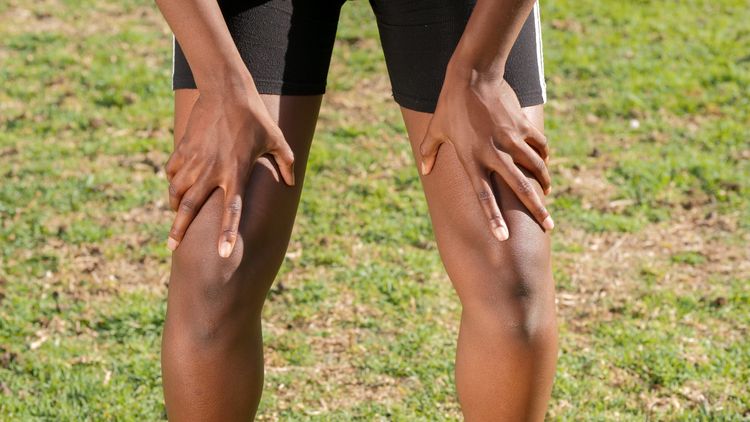🦀 Issue 123 - Why don’t your muscles work?

First off, if you’ve emailed me recently and I haven’t gotten back to you, it’s coming. Promise. I haven’t been great at this what with depression, travel, busy-ness, the new clinical, and everything else going on, but I’m trying to catch up. I know I still owe some folks from October even. It’s not good.
Second off, we need to talk about arthrogenic muscle inhibition, cuz it’s weird. Like super weird. Your body’s like “hey, this hurts, so I’m just going to turn off some muscles, k?” I mean, what gives? And we just don’t understand it. Below, we’re going to talk a little about why it happens (though we still really don’t know), and King Crab supporters are going to learn the best methods to fix it. Become a supporter here for the full issue.
With that, let’s dive in!
Wait! Happy Groundhog Day! My alma mater has the second biggest Groundhog Day celebration in the country. And if you can figure out what school that is and email me first, I'll mail you a PT Crab temporary tattoo. Which yes, do exist.
Tell me why why why we don’t we get AMI.
The Gist - By get, I mean understand. I would’ve just said that, but then you couldn’t sing the title as if it’s Bye Bye Bye by N’Sync. This review answers the question by emphasizing that it’s complicated and multi-faceted. I’ll pop the list below, but it’s also interesting to note that arthrogenic muscle inhibition has been seen not just in the quads, multifidus, and TA, like we’re used to, but also in the fibularis muscles and the soleus as well. I’ll speculate that it’s present elsewhere as well but just hasn’t gotten as much research.
The essence of AMI (and what the earliest research focused on) is a reflexive motor control arc from joint structures to surrounding musculature. There’s reflexive inhibition of spinal reflexes due to signals sent from nearby structures. But further research has shown that this only scratches the surface of what AMI is. Recent research has shown that muscle stretch receptors (type Ia fibers) have impaired signaling after injury, leading to reduced muscular co-activation in the area. This all gets super nerdy and anatomical, so I won’t go deeper than that, but suffice to say that the muscle part of it is related to reorganized signaling both from joint muscle receptors that decrease muscle fiber activation in the area.
But it gets deeper.
Tell Me More - There’s also a cortical (e.g. Brain) element to all of this. Injury can lead to the loss of afferent nerves, requiring them to be rebuilt. But they don’t grow back quickly or very well. That means that the brain has to remap onto what nerves are left over, potentially leading to increased pain signaling from the area and decreased neural understanding of the conditions down there. This could be the reason why proprioceptive problems are such a big part of chronic ankle instability, ACLR recovery, and the like. One recent piece of research has shown that the brain has to apply “more neuronal resources” to an injured limb to perform the same task as the uninjured one. Interesting. In the authors’ words
Although AMI is traditionally viewed as direct inhibitory mechanisms arising from the joint (such as pain, swell- ing, deafferentation, etc), the cascade of posttraumatic neurological consequences resulting in inhibition are either directly or indirectly a result of the injury itself. Therefore, models of AMI must incorporate the systemic neuroplastic alterations that occur as a result of the joint injury.
Lastly we’ll talk about descending inputs. A few studies have shown that descending nerves have higher activation thresholds after injury the uninjured side. This is “thought to be a protective mechanism to limit movement and decrease force through an injured joint. The specific mechanisms leading to reductions in corticospinal excitability are still unknown; however, many have theorized that other cortical centers in the brain are responsible for downregulating (or inhibit- ing) the motor cortex.”
I could go on (and the paper does), but that’s a lot and it’s dense. This paper is probably the best summary of AMI I’ve ever seen and goes some way to answering questions we’ve all had about quad inhibition and the like. It doesn’t tell us much about why we don’t really see hamstring inhibition very often or why treatments like NMES actually work to get rid of it, but it does pull together a lot of research on the topic. It is a narrative review and it’s dense as all get out, so you may have to settle in with this one and stew on it a while if you read the whole piece. I highly recommend you do.
Paper? Here.
From the Archives :
4 Meds or More? You gonna fall.
The Gist - This piece from the Journal Geriatric Physical Therapy grabbed 384 participants with a mean age of 73 and got them to walk along a Walkway gait analysis system (yupp, it’s just called “Walkway”, how creative) just to see what their gaits looked like. They then took this info and correlated it with the amount of medications they’re taking and what the gaits of probable fallers look like to see if the medication status could predict gaits that predict falls. Got all that? What’s your prediction?
It turns out that four is the magic number. Patients taking four or more medications had variations in their rhythm and pace of walking that are consistent with fallers. These people spent more time in double support, throwing off the rhythm of their walking, and took shorter strides, throwing off the pace. Interestingly, cadence did not correlate with medication status, but it’s also not a huge predictor of fall risk. So if you’re seeing someone with a bunch of medications, keep an eye out.
Tell Me More - As far as the deep data dive goes on this study, you can go really deep, but I’m going to keep it simple. For those with fewer than 4 medications, stride length averaged 88.3 cm while those with more averaged 82cm. Velocity dropped by 6cm per second (.06m/s) between the groups, and double support time increased from 43% of the gait cycle to 50% of the gait cycle. This is the point where I emphasize what you probably noticed. These differences aren’t huge. They’re there, but not massive.
The other point of emphasis in this study is that it represented the American population very well, with African Americans excepted. The sample was 48% White, 40% Hispanic, 4% Asian, 1% Black, and 2% Native American. The sample was slightly more male than female, but not by a ton. If you wanna dig deeper, you certainly can. Check out the paper for all, including the eigen-values! (Whatever those are, even I don’t know).
And I know what you’re thinking, surely those with more medications have more medical conditions and that’s why their gaits are slower, right? I mean, maybe? But we don’t know that since it wasn’t the point of the paper. Above is what we know, that those taking four or more medications walk with more double support time and shorter strides than those with three. We don’t know why. So don’t you go inferring it, okay? Good.
Paper? Right here.
And that’s our week! Hope you’re enjoying the winter, as it’s fleeting. This is the first year in a while that I’ve really been affected by the winter, so I’m doing my best to get out in the sun when possible (what little there is in the PNW) and I recommend you do the same. And if you love the gloomy, dark days, then you should be watching Wednesday on Netflix because it’s great. Just don’t watch it when you’re all alone in the dark in a quiet house on the edge of nowhere when the parents that you’re staying with are vacationing in Puerto Rico and you’re stuck wondering whether the thump you just heard was the monster about to break in or just the donkeys in the field nearby. Not that I’m experiencing that or anything.
Have a great week,
Luke
Here’s this week’s bibliography:
- Gabaldon, J., Wood, R., Murphy, E., & Keeley, D. W. (2020). Medication Status and Gait Mechanics in Older Adults: A Multivariate Analysis. Journal of Geriatric Physical Therapy, 43(2), 55–61. https://doi.org/10.1519/JPT.0000000000000253
- Mechanisms of Arthrogenic Muscle Inhibition in: Journal of Sport Rehabilitation Volume 31 Issue 6 (2021). (n.d.). Retrieved January 28, 2023, from https://journals-humankinetics-com.proxy.library.vcu.edu/view/journals/jsr/31/6/article-p707.xml






Comments
Want to leave a comment and discuss this with your fellow PTs? Join PT Crab and get summarized PT research in your inbox, every week.